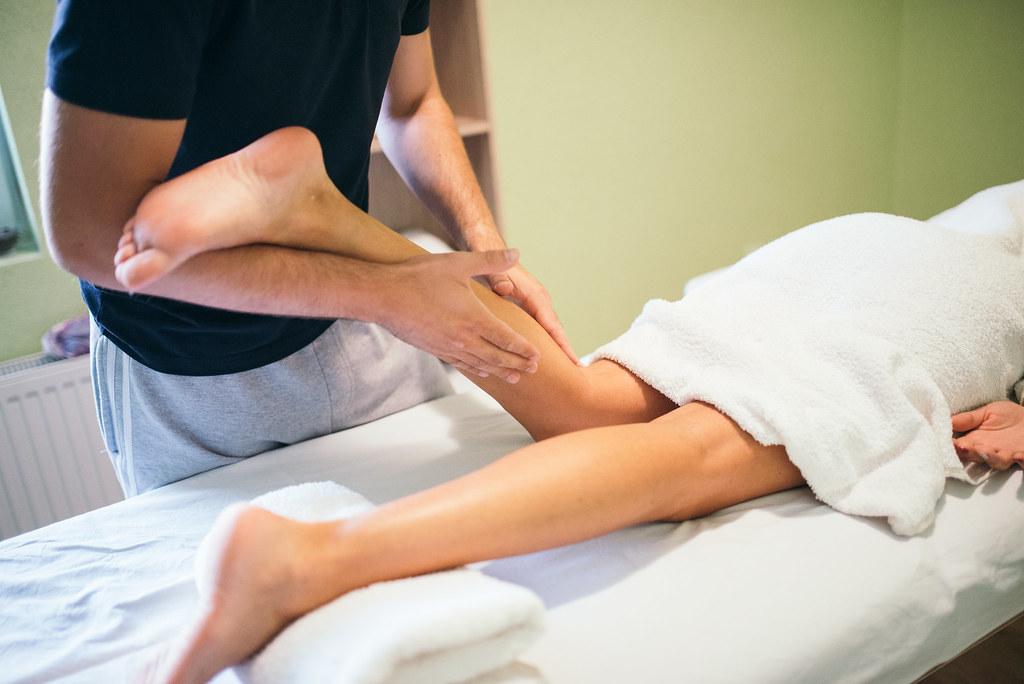Symptom – Are you experiencing Calf Pain
Calf pain can be caused by a variety of factors, including muscle strains, tendonitis, and shin splints. It can also be a sign of a more serious condition, such as a blood clot or deep vein thrombosis.
If you are experiencing calf pain, it is important to determine the cause in order to receive appropriate treatment. Here are some potential causes of calf pain:
- Muscle strain: This can occur if you overexert your calf muscles or if you have poor posture or technique while exercising.
- Tendonitis: This is inflammation of the tendons in the calf, which can be caused by overuse or poor technique while exercising.
- Shin splints: This is a common condition that causes pain along the inner edge of the shinbone (tibia) and can be caused by overuse or improper footwear.
- Blood clot: A blood clot in the calf can cause pain, swelling, and redness. This is a serious condition that requires immediate medical attention.
- Deep vein thrombosis (DVT): DVT is a condition in which a blood clot forms in the deep veins of the leg, usually in the calf. It can cause pain, swelling, and redness, and can be serious if the clot travels to the lungs.
If you are experiencing calf pain, it is important to see a healthcare provider to determine the cause and receive appropriate treatment. In the meantime, you can try resting, icing the affected area, and taking over-the-counter pain medication to help reduce inflammation and discomfort.
What causes Calf Pain?
Calf pain can be caused by a variety of factors, including muscle strains, tendonitis, and shin splints. It can also be a sign of a more serious condition, such as a blood clot or deep vein thrombosis.
- Muscle strain: This can occur if you overexert your calf muscles or if you have poor posture or technique while exercising.
- Tendonitis: This is inflammation of the tendons in the calf, which can be caused by overuse or poor technique while exercising.
- Shin splints: This is a common condition that causes pain along the inner edge of the shinbone (tibia) and can be caused by overuse or improper footwear.
- Blood clot: A blood clot in the calf can cause pain, swelling, and redness. This is a serious condition that requires immediate medical attention.
- Deep vein thrombosis (DVT): DVT is a condition in which a blood clot forms in the deep veins of the leg, usually in the calf. It can cause pain, swelling, and redness, and can be serious if the clot travels to the lungs.
It is important to see a healthcare provider to determine the cause of calf pain and receive appropriate treatment.
How to treat your Calf Pain?
Treatment for calf pain will depend on the underlying cause of the pain. Here are some general recommendations for treating calf pain:
- Rest: It is important to rest the affected leg and avoid activities that cause pain or discomfort.
- Ice: Applying ice to the affected area can help reduce inflammation and discomfort. Place an ice pack wrapped in a towel on the affected area for 15-20 minutes at a time, several times a day.
- Compression: Wearing a compression sock or wrap can help reduce swelling and support the calf muscles.
- Elevation: Elevating the affected leg above the level of your heart can help reduce swelling and discomfort.
- Pain medication: Over-the-counter pain medication, such as acetaminophen or ibuprofen, can help reduce inflammation and discomfort.
If you are experiencing calf pain, it is important to see a healthcare provider to determine the cause and receive appropriate treatment. Your healthcare provider may recommend additional treatment options, such as physical therapy or medication, based on the specific cause of your calf pain.





